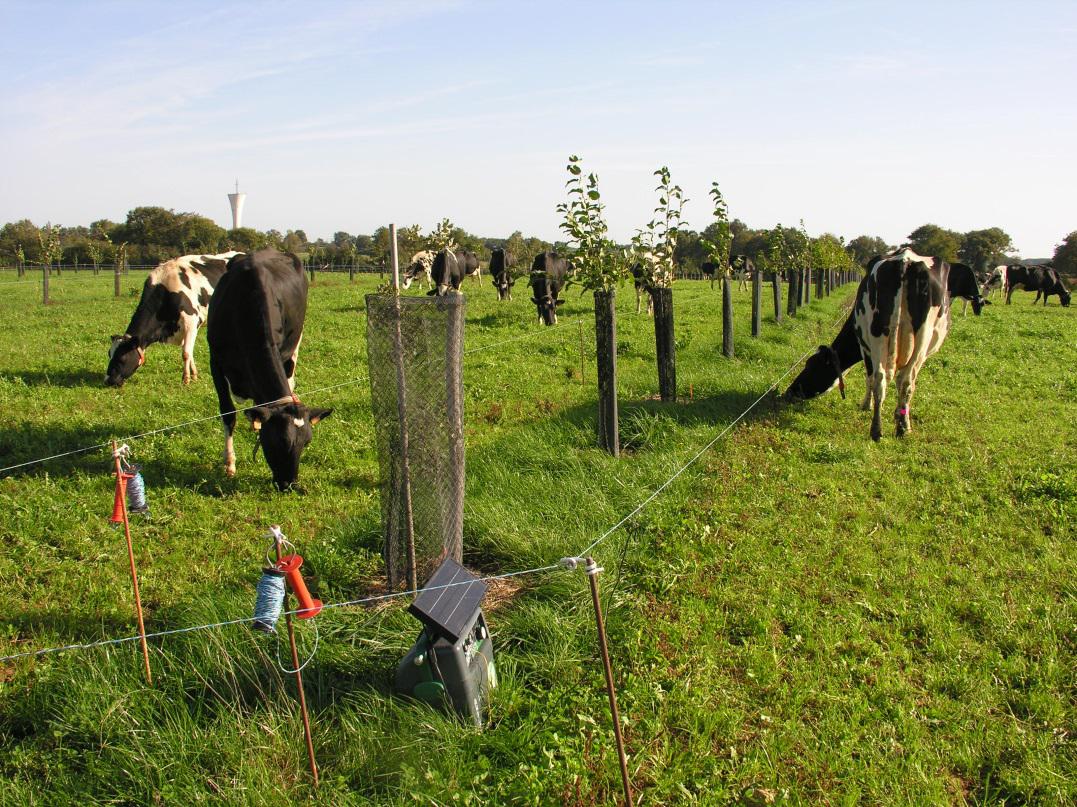
Agrofloresta com ruminantes em França
Descrição do sistema
Estações de pesquisa e agricultores seleccionados por toda a França têm investigado a possibilidade de integrar árvores em quintas de produção de bovinos, ovinos e caprinos.
Reunião de stakeholders inicial
Uma reunião inicial de stakeholders no norte de França, a 1 de Julho de 2014, foi seguida por uma segunda reunião no Centro Experimental do INRA de Lusignan a 28 de agosto de 2014. Juntas, as reuniões tiveram a participação de 27 participantes. Uma melhor imagem do agricultor e uma melhoria do bem-estar animal e foram vistos como aspectos positivos-chave dos sistemas agroflorestais com bovinos, ovinos e caprinos. Os aspectos negativos mencionados foram a complexidade do sistema e a carga de trabalho. As áreas potenciais para a pesquisa salientadas foram a proteção das árvore contra o gado, o arranjo espacial das árvores para otimizar a produção de forragem e o bem-estar animal, o benefício nutritivo da forragem das árvores e a reunião das apreciações técnicas e económicas de tais sistemas.
Se você gostaria de saber mais sobre a actividade deste grupo, entre em contato com Eric Pottier (eric.pottier@idele.fr).
Faça download do relatório inicial de stakeholders
Faça download do protocolo inicial de pesquisa e desenvolvimento
Download the system description
A system description report providing an update on agroforestry research with ruminants in France was produced in December 2015.
Lessons learnt
In July 2017, Sandra Novak and Eric Pottier summarised the lessons learnt from their research of agroforestry with cattle in France. The research on tree protection at the experimental site at INRA Lusignan showed that electric fencing and metal fences are effective in controlling cattle damage to the trees. However it was also necessary to use strong mesh guards on each individual tree to limit the damage from deer. Planting trees in double or triple rows was more effective (in terms of costs and weed control) than planting single rows. It was also noted that although the trees will provide production benefits in the medium to long-term, the “up-front” costs are significant.
A study of the effect of the young trees on pasture production showed that although grass production was reduced near the trees; the pasture production from the agroforestry and the (no trees) control plots was similar at a plot level. The trees tended to reduce the dominance of clover (Trifolium repens) and increase the dominance of perennial ryegrass (Lolium perenne).
The research also examined the nutritive value of the leaves of 10 tree, shrub or liana species relative to alfalfa. The crude protein concentration varies from less than 85 g kg-1 in holm oak to more than 220 g kg-1 in black locust, chestnut, ash and white mulberry. Both white mulberry (Morus alba) and common ash (Fraxinus excelsior) have sufficient digestibility and nitrogen degradability to be included in the diet of lactating cows in mixed crop-livestock systems.